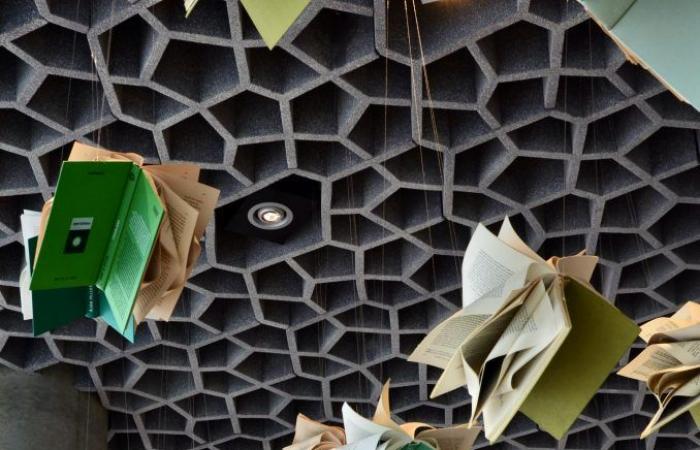When it comes to green building, there are failures. Like the François-Mitterrand Library (Paris XIIIe) and its reading rooms in the basement consume lighting while the archives are placed in glass towers, subsequently obscured to protect the documents from harmful ultraviolet rays.
What mistakes should you avoid making in your library? The 2024 congress of the Association of Librarians in charge of common documentation services was an opportunity to present exemplary projects.
1- Invest in an “ecolocal” heating system
The first lever to modulate the environmental footprint: the heating system, the largest consumer of energy. Each library has its own local resources. Paris can thus avoid paying too heavy a bill by taking advantage of the hot water springs in its ground… The Bouloie campus from the University of Franche-Comté heats itself with wood located up to a radius of 40 kilometers. The engineer Bruno Peuportier pointed out windows capable of diffusing light (avoiding dazzled areas and others that are too dark), as in the Oslo Central Library.
2- Eco-friendly materials
For the future university library of human and social sciences of Pont de Bois (University of Lille), the carpet will be made from fishing nets and the aluminum from the facades of ex-cans and license plates.
But be careful of small facade gestures warn Frédéric Desgrangesdeputy director at the Angers University Library: “ You should not be fooled by the “wow” side of the furniture, but favor a good plumbing and electrical system! ». In the same way, “we limit high-tech as much as possible, to facilitate maintenance”he testifies.
3- The garden
The Learning Center of the University of Haute-Alsace is part of a park with vegetable gardens, beehives, meadows and sheep… A place good for the planet as well as the mind, poetizes Lénaïk le Duigoudirector of the common service: “There is a real genius loci. The curves of the building are reminiscent of natural shapes, the spatial openness invites mental openness, the perspectives invite exploration. The place is an object of art ».
To achieve this systemic effect, “you have to be the owner of the premises, for example to have control over the roads and parking lots (which must be limited), or the construction of 620 housing units right next to the library”insists Stéphane Amiard, VP heritage of the University of Angers.
4- “Occupy better”
Once you have a low-energy building, all that remains is to amortize all these efforts by ensuring that it is well used. “A third of the year, the library is almost deserted. However, whatever the crowd, the building is open, heated, ventilated, lit and staffed! For the library to be even more inhabited, for the space to be even better occupied, we must play the role of a hub, making uses coexist”continues Frédéric Desgranges. Join a museum, for example.
5- Responsible purchasing
Finally, these ADBU study days were an opportunity to highlight a guide written by the Ministry of the Economy to integrate the clause of theresponsible purchasing in a public market, forcing document providers to be part of the circular economy. This is what libraries do by nature, by lending documents and work spaces.






